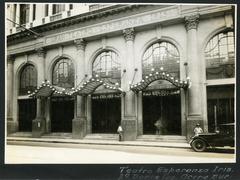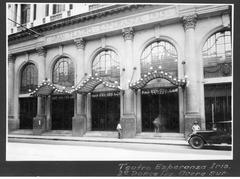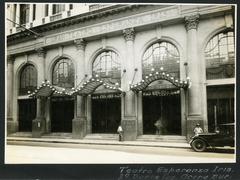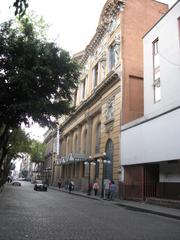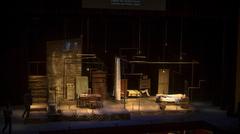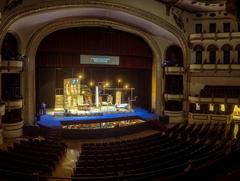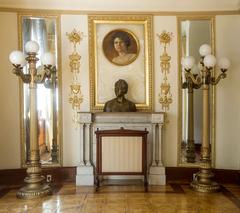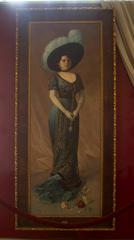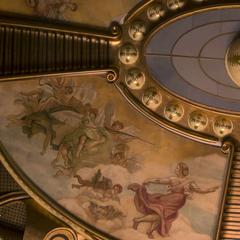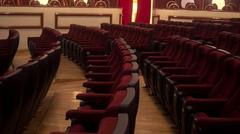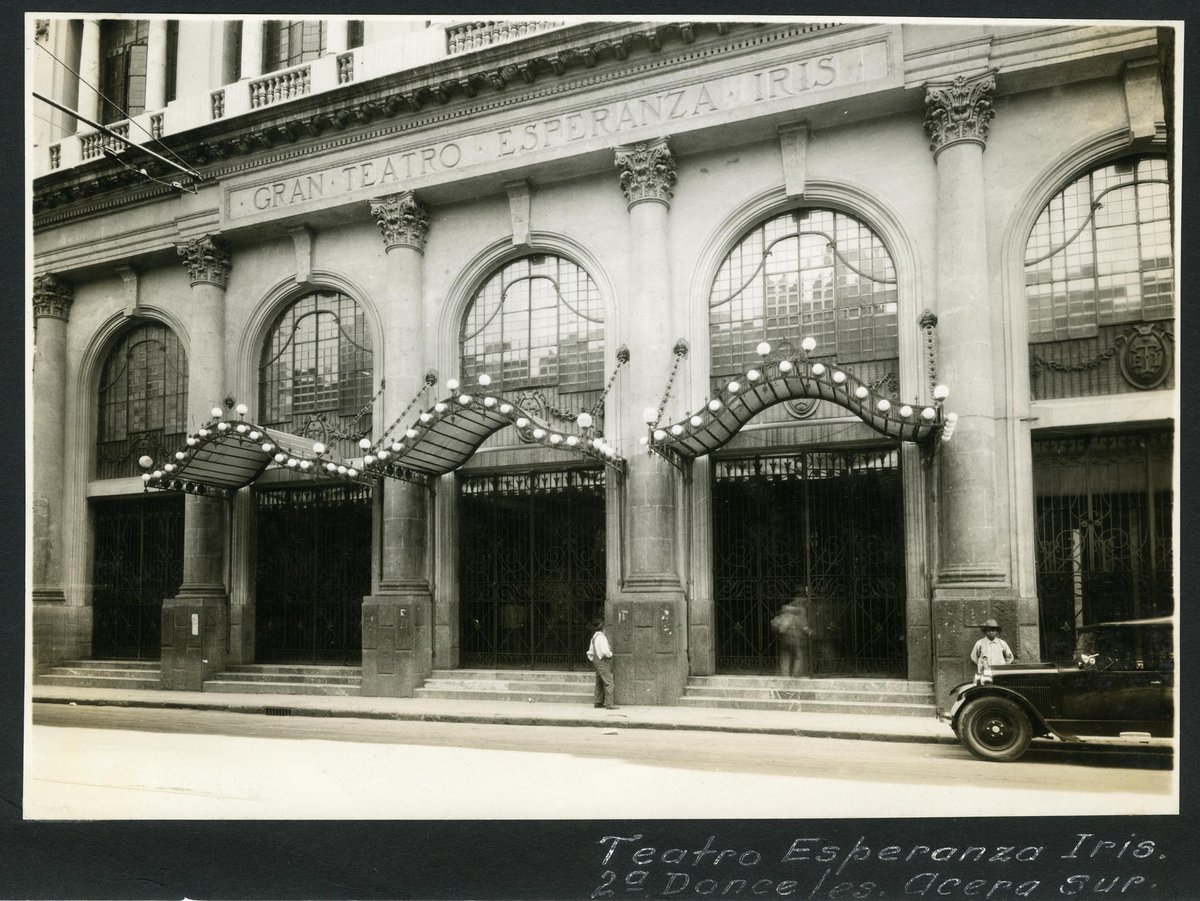
Teatro de la Ciudad Mexico City: Visiting Hours, Tickets, and Historical Site Guide
Date: 14/06/2025
Introduction
Teatro de la Ciudad Esperanza Iris, nestled in the heart of Mexico City’s Historic Center, stands as a testament to the city’s rich cultural legacy and artistic evolution. Since its grand opening in 1918, this historic venue has embodied Mexico’s aspirations to fuse European artistic grandeur with a distinctive Mexican identity, a vision championed by the legendary soprano Esperanza Iris. Its neoclassical and Italianate architecture, horseshoe-shaped auditorium, and ornate interiors offer a glimpse into early 20th-century cosmopolitan elegance (mexicocity.com, spanish.academy).
The theater has played a pivotal role within the UNESCO-listed Historic Center, an area steeped in history from its Aztec roots to colonial and modern transformations (wikipedia, britannica.com). After facing mid-century decline and fire damage, restoration efforts in the early 2000s revived its splendor, reinstating it as a premier cultural venue (spanish.academy). Today, Teatro de la Ciudad hosts a dynamic program of concerts, ballet, theater, and international festivals, drawing both locals and tourists (mexicocity.com, concerts50.com).
This guide details Teatro de la Ciudad’s historical significance, architectural marvels, visiting hours, ticketing, accessibility, nearby attractions, and tips for a memorable visit—making it a must-see for art lovers, history enthusiasts, and cultural explorers alike (UNESCO, 2024, mexicocity.cdmx.gob.mx).
Table of Contents
- History and Foundations
- Architectural and Artistic Features
- Role in the Historic Center and Cultural Life
- Visiting Information
- Notable Events and Performances
- Frequently Asked Questions (FAQs)
- Preservation and Ongoing Importance
- Explore More
History and Foundations
Origins and Early 20th Century
Teatro de la Ciudad Esperanza Iris was inaugurated in 1918, a time of great cultural ambition for Mexico City. Designed in the Italian style, its horseshoe-shaped auditorium, ornate neoclassical façade, and lavish interiors reflected a desire to rival Europe’s finest venues (mexicocity.com, spanish.academy). With a capacity of about 1,344, it emerged as one of Mexico City’s largest and most prestigious performance spaces.
The Esperanza Iris Era
Esperanza Iris, known as “the Queen of Operetta,” was instrumental in defining the theater’s identity. Under her guidance, the venue became a hub for operettas, zarzuelas, and international acts, attracting both local and international talent (mexicocity.com). The blend of European traditions and Mexican creativity set the stage for decades of artistic innovation.
Challenges and 21st Century Revival
Mid-century shifts in entertainment and a devastating fire led to periods of decline and closure. However, extensive restoration in the early 2000s—part of a broader Historic Center revitalization—restored the theater’s grandeur and secured its place as a cultural landmark (spanish.academy, wikipedia).
Architectural and Artistic Features
Teatro de la Ciudad’s architecture is a harmonious blend of neoclassical and Italianate influences. The grand façade features columns, arches, and detailed reliefs. Inside, the horseshoe-shaped auditorium ensures excellent acoustics and sightlines, while ornate balconies and restored decorative details evoke the elegance of its early years. While some original artwork was lost to fire, restorers have faithfully recreated the historic ambiance, combining traditional craftsmanship with modern amenities (spanish.academy).
Role in the Historic Center and Cultural Life
Located at Donceles 36, Teatro de la Ciudad is surrounded by Mexico City’s most significant historical and cultural sites. The Historic Center, itself a UNESCO World Heritage Site, contains over 1,400 buildings from the 16th to 19th centuries (wikipedia). The theater’s presence highlights its function as both a cultural institution and a living monument, bridging centuries of artistic tradition and serving as a vital part of the city’s cultural renaissance.
Visiting Information
Hours and Tickets
- Visiting Hours: Tuesday to Sunday, typically 11:00 AM – 7:00 PM. Hours may vary depending on events; always check the official schedule (mexicocity.cdmx.gob.mx).
- Tickets: Prices vary by event, generally ranging from 100 to 700 MXN. Discounts are often available for students, seniors, and groups. Purchase via the official website or at the box office.
- Guided Tours: Available on select days; book in advance for behind-the-scenes access and historical context.
Accessibility
- Physical Access: The theater is wheelchair accessible, with ramps, elevators, and designated seating. Accessible restrooms are on the main floor.
- Additional Services: Upon request, assistive listening devices and guidance for visually or hearing-impaired visitors are available.
- For more on city-wide accessibility: (CDMX Accessible Tourism Guide).
Getting There and Visitor Tips
- Location: Donceles 36, Centro Histórico, Mexico City.
- Transport: Easily accessible via Metro (Allende and Zócalo stations), Metrobús, taxi, and ride-share. Limited parking—public transport is recommended.
- Tips:
- Arrive early to explore the historic lobby.
- Book tickets in advance for popular shows.
- Dress smart-casual for evening events.
- Photography is permitted in public areas (not during performances).
Notable Events and Performances
The theater’s stage has hosted renowned artists and companies, such as Ballet Nacional de Cuba, Pablo Milanés, Betsy Pecanins, and Lila Downs. Its annual calendar includes classical concerts, contemporary theater, dance, and international festivals (concerts50.com). Audience reviews praise the ambiance, acoustics, and programming diversity, making every visit a unique experience.
Frequently Asked Questions (FAQs)
Q: What are the opening hours?
A: Usually Tuesday–Sunday, 11:00 AM to 7:00 PM, with performances in the evening.
Q: Are guided tours available?
A: Yes; book via the official website or box office.
Q: Is the theater wheelchair accessible?
A: Yes, including ramps, elevators, and accessible seating.
Q: How do I buy tickets?
A: Online through the official website or at the box office.
Q: Can I take photos inside?
A: Generally in public areas; not during performances.
Q: What nearby attractions can I visit?
A: Palacio de Bellas Artes, Metropolitan Cathedral, Zócalo Square, and Alameda Central park.
Preservation and Ongoing Importance
Teatro de la Ciudad is managed by the Secretaría de Cultura de la Ciudad de México, which oversees its programming and preservation (teatros.cultura.cdmx.gob.mx). Beyond entertainment, the venue promotes cultural exchange, education, and community engagement, ensuring its role as a beacon of Mexico City’s artistic heritage.
Explore More
After your visit, explore other landmarks such as Palacio de Bellas Artes, Museo Nacional de Arte, and the Zócalo. For more tips, download the Audiala app and follow Teatro de la Ciudad on social media for event updates and cultural guides.
Summary and Call to Action
Teatro de la Ciudad Esperanza Iris is an essential destination for anyone seeking to immerse themselves in Mexico City’s rich cultural and historical landscape. With accessible facilities, a vibrant events calendar, and proximity to iconic sites, the theater provides an ideal starting point for exploring the city’s artistic heart (spanish.academy, UNESCO, 2024).
For the latest information, ticket bookings, and travel inspiration, download the Audiala app, follow us on social media, and browse related articles to enrich your Mexico City experience (mexicocity.com, concerts50.com).
References
- Teatro de la Ciudad Esperanza Iris: History, Tickets, and What to See in Mexico City’s Historic Center, 2025, mexicocity.com
- Top 10 Most Spectacular Theaters in Mexico City, 2025, spanish.academy
- Historic center of Mexico City, 2025, Wikipedia
- Mexico City Cultural Life, 2025, Britannica
- Teatro De La Ciudad Visiting Hours, Tickets, and Cultural Significance in Mexico City, 2025, mexicocity.cdmx.gob.mx
- UNESCO World Heritage Centre: Historic Centre of Mexico City, 2024
- Mexico City Official Cultural Calendar 2025, 2025, mexicocity.cdmx.gob.mx
- Teatro De La Ciudad Visiting Hours, Ticket Information, and Accessibility at Mexico City Historical Sites, 2025, concerts50.com
- CDMX Accessible Tourism Guide
- Cartelera de Teatro
